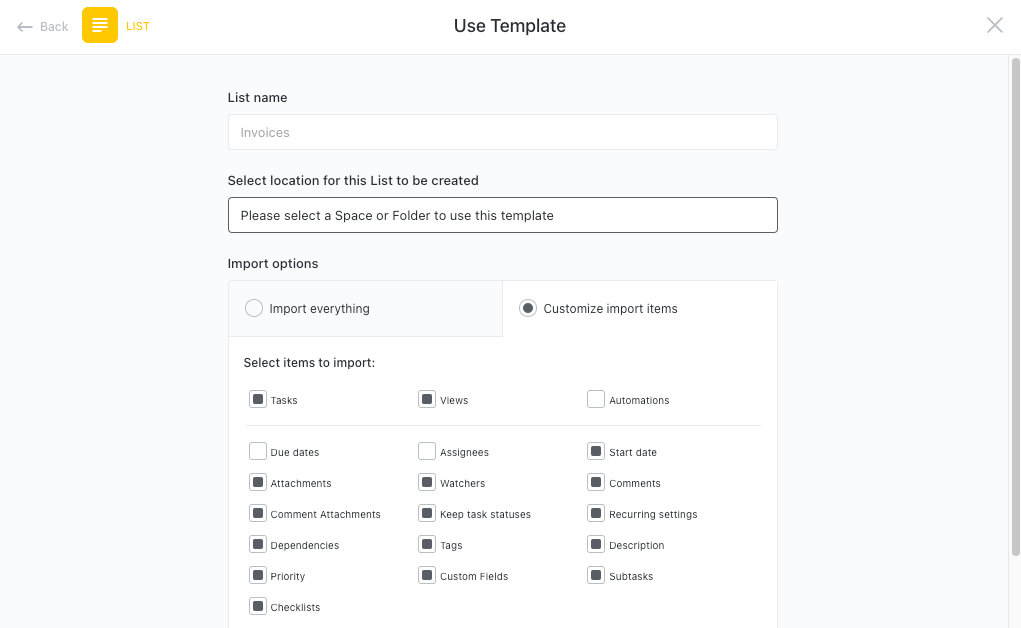A well-crafted marketing plan can be the difference between success and failure in achieving your business goals. That's why ClickUp's Marketing Plan Template is designed to help you plan, track, and optimize your marketing campaigns all in one place.
With this template, you can easily:
- Set achievable marketing objectives
- Organize tasks into actionable steps to reach those goals
- Track progress with built-in metrics and analytics
Say goodbye to scattered spreadsheets and multiple tools! ClickUp's Marketing Plan Template will give you the clarity and control you need to take your marketing efforts to the next level.
Benefits of a Marketing Plan Template
A marketing plan template can be an invaluable asset for any business. A well-crafted template can:
- Provide a roadmap for how to reach your marketing goals
- Allow you to allocate time and resources more efficiently
- Help you measure the success of your campaigns
- Give you the ability to adjust your marketing strategies as needed
Main Elements of a Marketing Plan Template
ClickUp's Marketing Plan Template is designed to help you create, organize, and track your marketing project plan. This List template includes:
- Custom Statuses: Mark task status such as Cancelled, Complete, In Progress, Needs Input, and Planned to keep track of current active tasks in the project
- Custom Fields: Use 6 different custom attributes such as Quarter, Task Type, Impact, Progress, Percent Completion, and more to save key project information and easily visualize progress and results
- Custom Views: Open 5 different views in different ClickUp configurations, such as the Key Results, Timeline, Getting Started Guide, Objectives, and Progress Board, so that all the information is easy to access and organized
- Project Management: Improve tracking with time tracking capabilities, tags, dependency warning, emails, and more
How to Use a Marketing Plan Template
Creating an effective marketing plan involves the following steps:
1. Identify your target audience
The first step in creating a marketing plan is to identify your target audience. This will help you determine which channels and strategies will be most effective in reaching them.
Create a Doc in ClickUp to brainstorm audience profiles and target demographics.
2. Set objectives and goals
Once you’ve identified your target audience, it’s time to set objectives and goals. Decide on the specific outcomes you want to achieve, such as increased brand awareness or increased sales.
Set Goals in ClickUp to track your progress and measure success.
3. Create a plan of action
Now that you’ve identified your target audience and set objectives and goals, it’s time to create a plan of action. This plan should include the channels and strategies you will use to reach your target audience, as well as a timeline for implementation.
Use the Gantt chart in ClickUp to create a visual representation of your timeline and plan of action.
4. Monitor and adjust
The last step is to monitor your progress and make adjustments as necessary. Keep an eye on metrics such as website visits, conversions, and sales to gauge how your tactics are performing.
Use tasks in ClickUp to track progress and performance metrics.
Get Started with ClickUp's Marketing Plan Template
Marketing teams can use this Marketing Plan Template to help everyone stay on the same page when it comes to planning and executing marketing strategies.
First, hit “Add Template” to sign up for ClickUp and add the template to your Workspace. Make sure you designate which Space or location in your Workspace you’d like this template applied.
Next, invite relevant members or guests to your Workspace to start collaborating.

Now you can take advantage of the full potential of this template to create a successful marketing plan:
- Use the Key Results View to establish and track measurable goals for your marketing plan
- The Timeline View will help you plan out tasks and set a timeline for completion
- The Getting Started Guide View will provide you with resources to help you create a successful marketing strategy
- The Objectives View will provide you with a space to organize and store all of your marketing objectives
- The Progress Board View will help you keep track of progress and measure success
- Organize tasks into six different statuses: Cancelled, Complete, In Progress, Needs Input, Planned, to keep track of progress
- Update statuses as you progress through tasks to keep team members informed of progress
- Monitor and analyze tasks to ensure maximum productivity
Get Started with Our Marketing Plan Template Today







